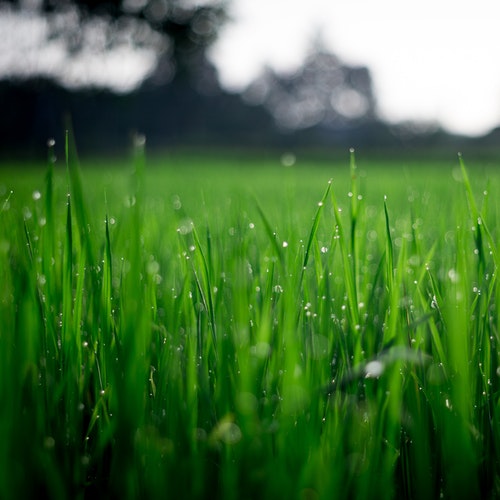Share this!
 By: Brian Neufeld, GolfTourney.com Contributor
By: Brian Neufeld, GolfTourney.com Contributor
Most of us are only vaguely familiar with the playing surfaces at our home courses. You might know some local knowledge such as “the ball always breaks towards the river” or which greens are more receptive to approach shots than others, but most amateurs have no idea what turfgrass they’re playing on and how it impacts their game. Today, we’ll look at some of the most widely used turf types and how to play your best on them.
Cool Season vs. Warm Season
Don’t glaze over; we’re going to keep the science to a minimum. Depending on where you live in the country will determine what type of turf you play on. Improved irrigation and ventilation systems like fans and sub air have blurred the lines in recent decades, but the geographical boundaries still mostly hold.
There are three main regions for turfgrass types. The cool-season grasses are located in the northern half of the country, and the optimum soil temperature is between 65-75 degrees. Warm-season grasses are predominantly found in the southern parts of the country with optimum soil temperatures between 85-95 degrees. The third region, known as the transition zone, is the most contentious region of the three. A vast majority of superintendents would probably describe their course as being in the transition zone despite being firmly in a warm or cool zone. This is because the transition zone is the hardest area to maintain healthy turf, as conditions are just never quite right. The consensus is the transition zone runs east to west from Virginia and North Carolina, to Kansas and Oklahoma, all the way west to Northern Arizona and Southern California. You’ll find a wide variety of turfgrasses grown throughout these areas.
Types of Turfgrass
-
- Bentgrass- Probably the most widely spread grass in the golf world, there are over 40 different varieties in the country. Although a cool-season grass, it is used extensively for putting greens almost everywhere.
Swing Tip: Pay attention to your lie in bentgrass rough. If the grass is growing towards your ball, you’re likely to struggle to get the club through it, leaving it short. Grass laying away? Beware of the dreaded “flyer.”
- Bentgrass- Probably the most widely spread grass in the golf world, there are over 40 different varieties in the country. Although a cool-season grass, it is used extensively for putting greens almost everywhere.
-
- Bermudagrass- The other widely used grass is Bermuda. Found all across the south and even northern reaches of the transition zone. Bentgrass is a warm-season grass used on every part of the golf course.
Swing Tip: Bermuda can sometimes be “grabby” with your clubface, but for the most part, the low growing grass allows for a ton of spin and shot-shaping opportunities. Spend extra time on the range working on spinning the ball to take your game to the next level on Bermudagrass.
- Bermudagrass- The other widely used grass is Bermuda. Found all across the south and even northern reaches of the transition zone. Bentgrass is a warm-season grass used on every part of the golf course.
-
- Poa Annua- Considered a weed in most of the country, Poa annua is used in the northeast and cooler regions of California mostly on putting greens. Due to its ability to spread, there aren’t many courses in the country that don’t have some of this cool-season grass mixed in.
Swing Tip: If you’re playing a course with Poa, notably Pebble Beach, book an early tee time. Poa tends to grow at different rates within the same stand, so nailing down green speeds is a significant task.
- Poa Annua- Considered a weed in most of the country, Poa annua is used in the northeast and cooler regions of California mostly on putting greens. Due to its ability to spread, there aren’t many courses in the country that don’t have some of this cool-season grass mixed in.
-
- Fescue- One of the most popular cool-season choices for rough and areas with dense shade, fescue often strikes fear in the heart of golfers. Known as some of the gnarliest rough out there, driving accuracy on a fescue rough course is at a premium.
Swing Tip: The best advice for escaping fescue rough is to take your medicine. Choose a highly lofted club, and do whatever it takes to return to the fairway as quickly as possible. This is not the time to be a hero.
- Fescue- One of the most popular cool-season choices for rough and areas with dense shade, fescue often strikes fear in the heart of golfers. Known as some of the gnarliest rough out there, driving accuracy on a fescue rough course is at a premium.
-
- Zoysiagrass- Zoysia is an excellent choice as a warm-season turf, especially in the transition zone. Mostly used on tees and fairways, Zoysia plays similarly to Bermudagrass.
Swing Tip: Much like Bermuda, the ball tends to sit high on Zoysia. It’s essential to stay within yourself, as the temptation to swing out of your spike looms large.
- Zoysiagrass- Zoysia is an excellent choice as a warm-season turf, especially in the transition zone. Mostly used on tees and fairways, Zoysia plays similarly to Bermudagrass.
Turf types impact every stroke you make on the course, whether you realize it or not. From smooth-rolling putts on bentgrass, to ripping a three wood off a Zoysia fairway, the turf type you’re playing on should be on the back of your mind all round. Before arriving at the course, research what turf you’ll be playing on and start formulating your plan. Increasing your knowledge will only help your game.
About the Author: Brian Neufeld
Brian Neufeld’s background includes more than 15 years of experience in golf course management, specializing in agronomy. Brian uses his knowledge of the game and best practices in turf sustention to create informative pieces for GolfTourney.com’s readers.
Share this!


